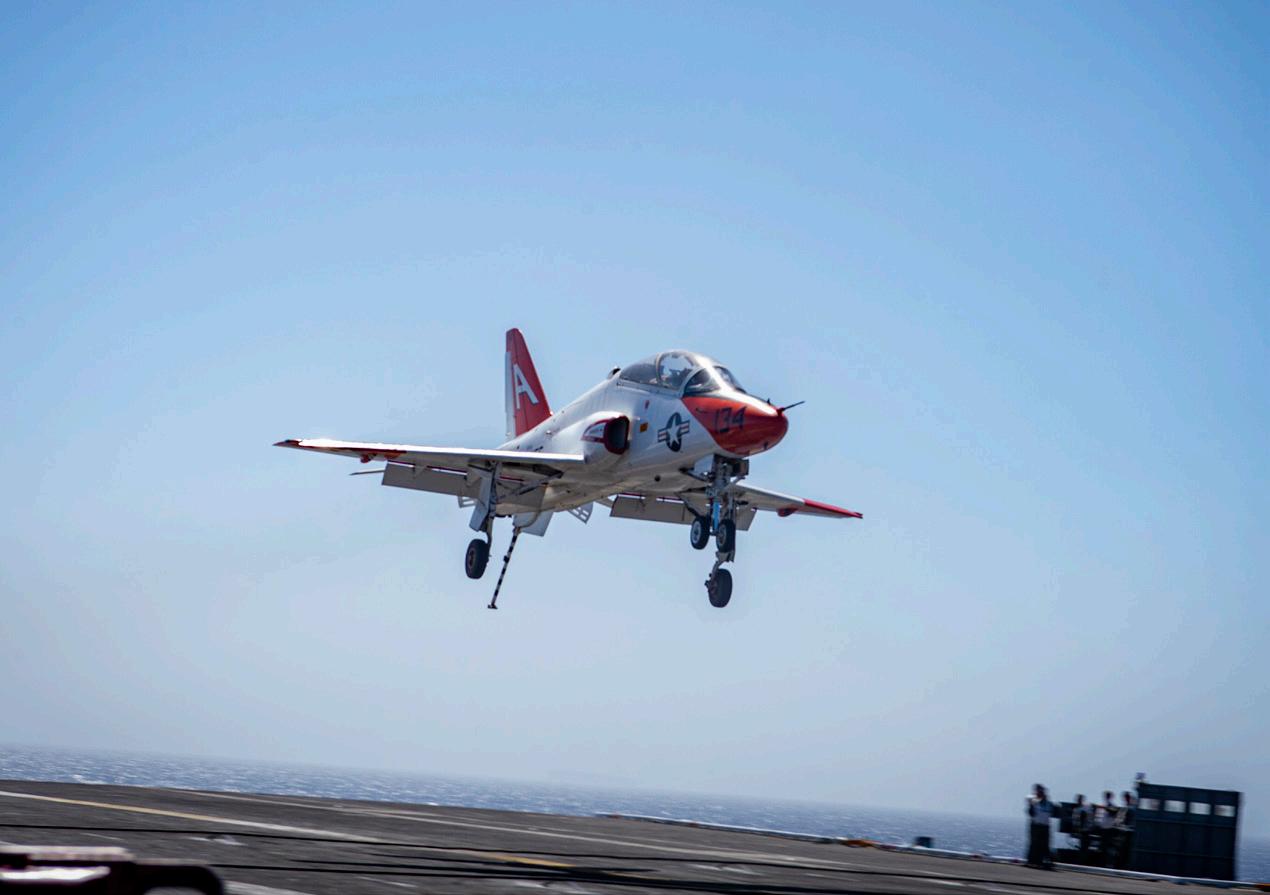
3 minute read
Save the Seals
By Lt. Cmdr. John Izzo and Lt. Cmdr. Nick Jones, VT-86
Like many aircraft, the T-45C community is no stranger to hydraulic (HYD) failures and emergencies. Although the aircrew should always be on alert for problems in their jet, it is worth noting the increased risk of hydraulic emergencies brought on by cold winter weather – even in places like sunny Pensacola, Florida. Normal loads placed on cold-soaked aircraft and systems can overstress HYD pumps, lines and seals in ways both insidious and spectacular.
U.S. Navy photos by Mass Communication Specialist Seaman Hannah Kantner


U.S. Navy photo by Mass Communication Specialist 3rd Class Justin McTaggar
In order to help aircrew avoid inducing a hydraulic emergency, the Naval Air Training and Operating Procedures Standardization cold weather procedures chapter (section 19.2.3) states:
“At temperatures below minus 15 degrees Fahrenheit (minus 26 degrees Celsius), the flight controls should not be cycled for a minimum of five minutes after engine start to allow the hydraulic fluid to warm. The controls should then be cycled in small circular motions to slowly warm the actuators. This minimizes damage to actuator seals, thus preventing hydraulic leaks.”
Even if temperatures at the time of startup do not reach as low as minus 15 degrees Fahrenheit, extended periods of on-deck times - over a weekend, for example, can lead to “cold-soaking” of the aircraft. The T-45C is a relatively simple aircraft to start; it is not unheard of for experienced aircrew to go from batteries on to completion of final checks in less than five minutes.
Given the expeditious startup sequence, it’s possible the aircraft systems may still be quite cold and stiff when the jet taxis out of the line, even with an engine operating around 842 degrees Fahrenheit (450 degrees Celsius). In fact, chilled fuel can serve as a heat sink as it travels from the tanks to the engine, further delaying components from warming to their optimal operating temperatures.
The danger here is that rubber seals and gaskets are stiffer and more prone to cracks, leaks and shrinkage when they are cold. Loading a HYD system full of such seals with the full 3,000 or even 5,000 pounds per square inch provided by the engine-driven pump is asking for a blowout. Despite the fact the Aviation Hydraulics Manual (NAVAIR 01-1A-17) states seals are designed to operate between minus 65 degrees Fahrenheit and plus 160 degrees Fahrenheit, every seasoned maintainer knows it’s best to avoid putting that demand on the system before it is ready.
Therefore, a little extra time taken before actuating flight controls will pay dividends in preventing seal failures and reduce the possibility of air entering the system, which could lead to fluctuations in HYD pressure on deck or in flight. Once aircrew have allowed a few minutes post-startup for the jet to warm up, it’s best to begin with small magnitude inputs, cycling the controls or even starting with trim to exercise the valves and seals while maintenance checks for any obvious leaks. After a few iterations, pilots can start to smoothly program full-deflection on the flight control surfaces, slowly “stirring the pot” to exercise the system fully.
Having taken the time to prepare and test the HYD system, aircrew can continue their mission, confident that the critical hydraulics they rely on will perform as expected, avoiding a hasty, self-induced return to base. Remember: If you felt chilly when you walked to the jet, it’s a safe bet that the aircraft is cold too. It’s well worth spending the time to warm up the aircraft so it will perform as needed, when needed.










